Deck & Commander Strategies

Teysa Karlov
Midrange aristocrats deck that floods the board with small tokens and leverages sacrifice outlets and death triggers to generate value and drain opponents' life.
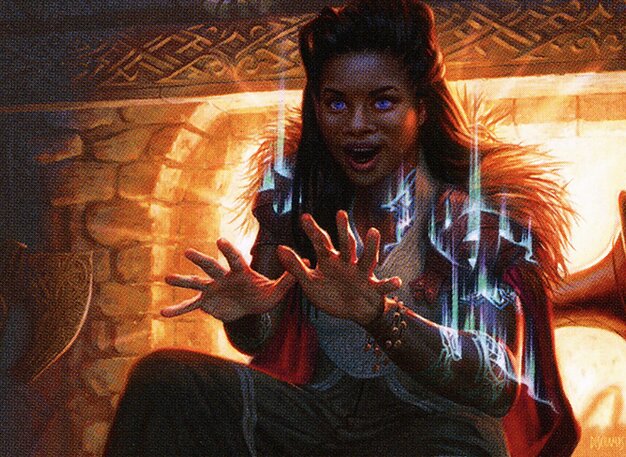
Birgi, God of Storytelling
Storm combo deck aiming to cast multiple spells per turn using Birgi's ability to generate mana, building a high storm count to win with spells like Grapeshot.


Sakashima of a Thousand Faces and Vial Smasher the Fierce
Grixis midrange deck focused on casting big, impactful spells while dealing random damage to opponents via Vial Smasher, and leveraging clone synergies with Sakashima.

Lathril, Blade of the Elves
Elf tribal deck that ramps quickly, generates tokens, and uses synergy among elves combined with tutors and card advantage to overwhelm opponents.
Gameplay Insights
- 1
Calvin's use of Necropotence early in the game allowed him to gain significant card advantage at the cost of life, enabling him to fuel his aristocrats strategy.
- 2
Max carefully managed Birgi's mana generation and storm count by casting multiple spells in a turn, including rituals and burn spells, preparing for a potential Grapeshot combo finish.
- 3
Guy's casting of Vial Smasher and Sakashima early on enabled a steady stream of random damage triggers to opponents, applying pressure while developing board presence with clones.
- 4
The presence of Roiling Vortex on the battlefield restricted life gain and caused incremental damage, influencing players' life management and timing of plays.
- 5
Calvin's response to Fiery Confluence by sacrificing Circle of Protection to itself minimized damage and preserved board presence through token generation.
- 6
Lathril's deployment and the use of Sylvan Library allowed the elf tribal player to maintain consistent card draw and ramp, setting up a strong midgame board.
- 7
Multiple tutors such as Vampiric and Demonic Tutor were used effectively to find key pieces like Necropotence and Bolus Citadel, demonstrating the importance of consistency in these decks.
Notable Cards
-

Necropotence
-

Roiling Vortex
-
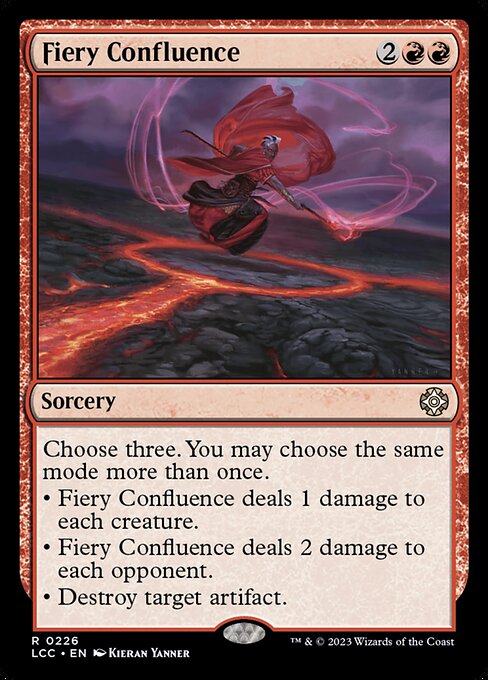
Fiery Confluence
-
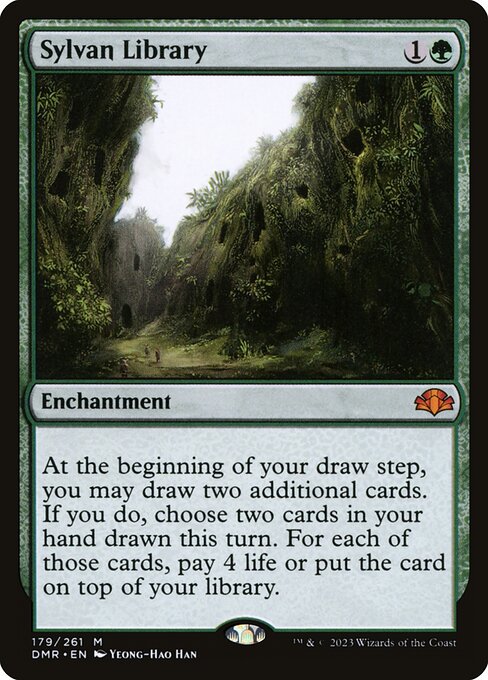
Sylvan Library
-

Vampiric Tutor
-

Demonic Tutor
-

Lathril, Blade of the Elves
-
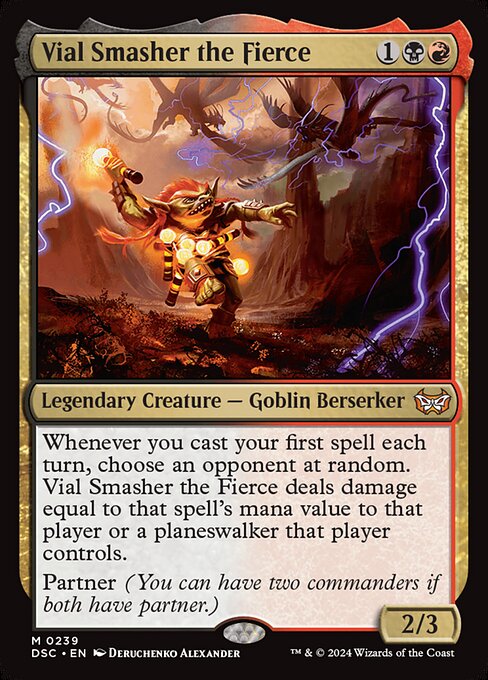
Vial Smasher the Fierce
-
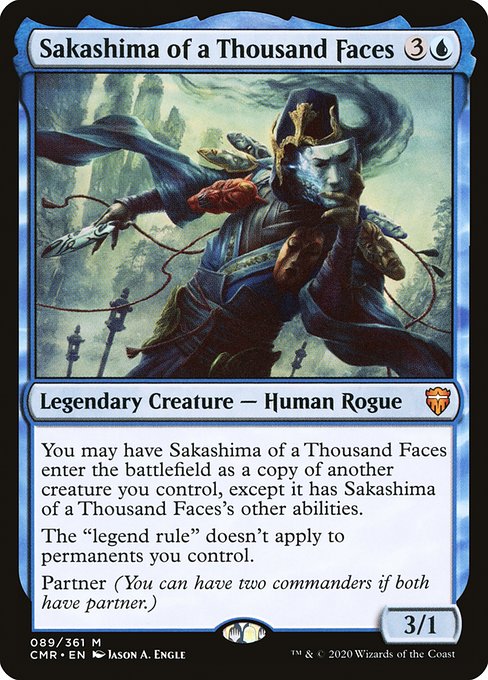
Sakashima of a Thousand Faces
-

Birgi, God of Storytelling // Harnfel, Horn of Bounty
-
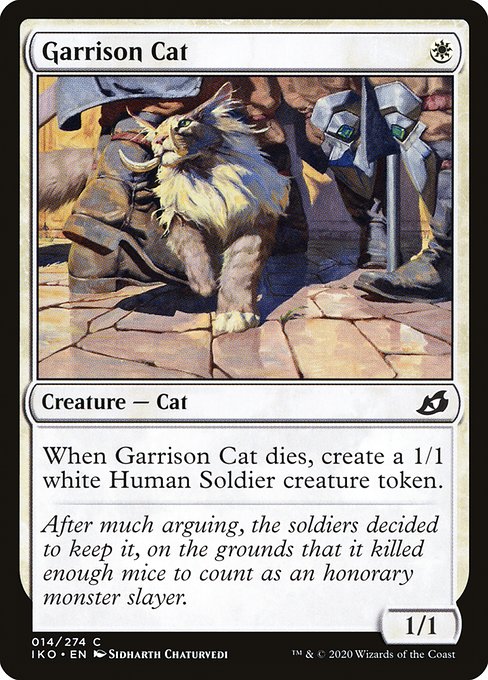
Garrison Cat
-
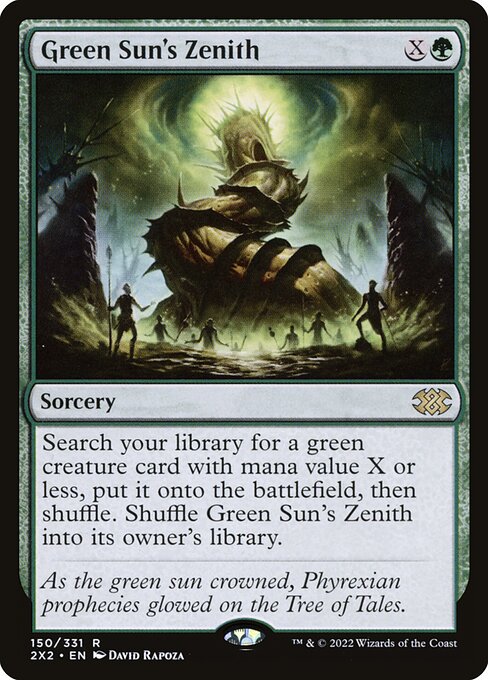
Green Sun's Zenith
-

Grapeshot
Gameplay Summary
The game began with each player establishing their board state according to their deck strategies.
Calvin, playing Teysa Karlov, focused on a midrange aristocrats theme, flooding the board with small creatures and leveraging sacrifice outlets for incremental value.
Max piloted Birgi, God of Storytelling, aiming for a storm combo with spells like Grapeshot, carefully building mana ramp and storm count.
Guy played a Grixis deck with Sakashima of a Thousand Faces and Vial Smasher the Fierce, aiming to cast big spells and deal random damage through Vial Smasher's triggered ability.
The narrator controlled Lathril, Blade of the Elves, building an elf tribal board with heavy interaction and card advantage tools like Sylvan Library and tutors. Early turns saw mana acceleration and key spells such as Roiling Vortex and Necropotence coming into play.
Calvin utilized Necropotence to dig deep into his deck, sacrificing life for card advantage, while Max developed his storm engine, including lands with counters and spells that fuel Birgi's ability.
Guy dropped Vial Smasher and Sakashima, creating clone synergies and starting to chip away at opponents' life totals.
The elf tribal player established a solid ramp base and cast Lathril to begin generating elf tokens and board presence.
The game was marked by strategic plays around life management due to Roiling Vortex and Necropotence, and significant board wipes like Fiery Confluence.
Calvin's aristocrats generated value through sacrifice triggers, while Max prepared for a potential Grapeshot finish.
The interactions between clone effects, random damage triggers, and elf token generation created a dynamic and shifting board state as players jockeyed for control and position.
![Teysa vs Sakashima//Vial Smasher vs Lathril vs Birgi [EDH/Commander, MTG Gameplay] 2021 thumbnail](https://i.ytimg.com/vi/Fll5BVOlkug/maxresdefault.jpg)


![Edric vs Sakashima//Vial vs Meren vs Animar [EDH/Commander, Magic The Gathering] MTG Gameplay 2020 thumbnail](https://i.ytimg.com/vi/DLsmvjVFGls/sddefault.jpg)
![Daretti vs Kadena vs Zurgo vs Vial//Sakashima [EDH/Commander, Magic The Gathering Gameplay] 2020 thumbnail](https://i.ytimg.com/vi/cY-kt6jk1y4/sddefault.jpg)
![Delina vs Vial // Sakashima vs Ur-Dragon vs Grazillax [EDH/Commander, Magic The Gathering Gameplay] thumbnail](https://i.ytimg.com/vi/9jIFre8Udig/sddefault.jpg)
![Baral vs Ezuri vs Akiri vs Sakashima & Vial Smasher[ EDH/Commander, MTG Gameplay ] 2022 thumbnail](https://i.ytimg.com/vi/CqsI3iYmiJw/sddefault.jpg)
![Tevesh/Prava vs Akiri vs Sakashima/Vial vs Yuriko [EDH/Commander Magic The Gathering Gameplay] 2021 thumbnail](https://i.ytimg.com/vi/0OTTyReRAWc/sddefault.jpg)
![Beledros vs Zacama vs Vial Clone vs Trynn&Silvar [EDH/Commander, Magic The Gathering Gameplay] 2021 thumbnail](https://i.ytimg.com/vi/t9ELN8MW4BI/sddefault.jpg)
![Blim vs Tevesh Szat vs Sakashima vs Kamahl [EDH] Commander Legends Gameplay 2020 thumbnail](https://i.ytimg.com/vi/Jv4ouFUHM3c/sddefault.jpg)
![Kamahl vs Blim vs Sakashima vs Tevesh [EDH / Commander] Gameplay 2020 thumbnail](https://i.ytimg.com/vi/oGi0oXH6CZI/sddefault.jpg)
![Breya vs Klothys vs Krark // Sakashima vs Golos [EDH/Commander, Magic The Gathering Gameplay] 2021 thumbnail](https://i.ytimg.com/vi/628hDouxGUc/sddefault.jpg)
![Krark & Sakashima vs Yuriko vs Dina vs Edgar [EDH/Commander, Magic The Gathering Gameplay 2022] thumbnail](https://i.ytimg.com/vi/1zJKNsziD2Y/sddefault.jpg)


![Teysa vs Kwain vs Xantcha vs Yorion [EDH/Commander, Magic The Gathering] MTG Gameplay 2021 thumbnail](https://i.ytimg.com/vi/nK7YTEdjk0I/sddefault.jpg)
![Teysa vs Windgrace vs Akiri vs Greven [EDH/Commander, Magic The Gathering Gameplay] 2021 thumbnail](https://i.ytimg.com/vi/ekyZM9QE0C0/sddefault.jpg)






![Commander VS S14E3: Teysa VS Rakdos VS Zegana VS Nikya [EDH] thumbnail](https://i.ytimg.com/vi/WPW4CHlykqI/sddefault.jpg)
![Firja vs Lathril vs Magda vs Tergrid [Big Fat Budget EDH/Commander Game] 2021 thumbnail](https://i.ytimg.com/vi/T-b_rIkmGA4/sddefault.jpg)
![Bruvac vs Ruhan vs Trynn // Silvar vs Lathril [EDH/Commander, Magic The Gathering Gameplay] 2021 thumbnail](https://i.ytimg.com/vi/1K7YIYQIJFE/sddefault.jpg)
![Lathril vs Magda vs Tergrid vs Firja [EDH/Commander, Magic The Gathering Gameplay] 2021 thumbnail](https://i.ytimg.com/vi/OppVL5QAPqo/sddefault.jpg)
![Varina vs Rafiq vs Lathril vs Valki [EDH/Commander, Magic The Gathering Gameplay] 2021 thumbnail](https://i.ytimg.com/vi/lecwGN70PSY/sddefault.jpg)
![$125 Budget!! Firja vs Lathril vs Lynde vs Tovolar [EDH/Commander, Magic The Gathering Gameplay] thumbnail](https://i.ytimg.com/vi/bRtAPE8DXIw/sddefault.jpg)
![Averna vs Light-Paws vs Lathril vs Tatsunari [Budget EDH/Commander, MTG Gameplay 2022] thumbnail](https://i.ytimg.com/vi/BAJu1-NXv0M/sddefault.jpg)
![Orvar vs Lathril vs Lier vs Purphoros [EDH/Commander, MTG Gameplay 2022] thumbnail](https://i.ytimg.com/vi/YaSdhNWIHz4/sddefault.jpg)









